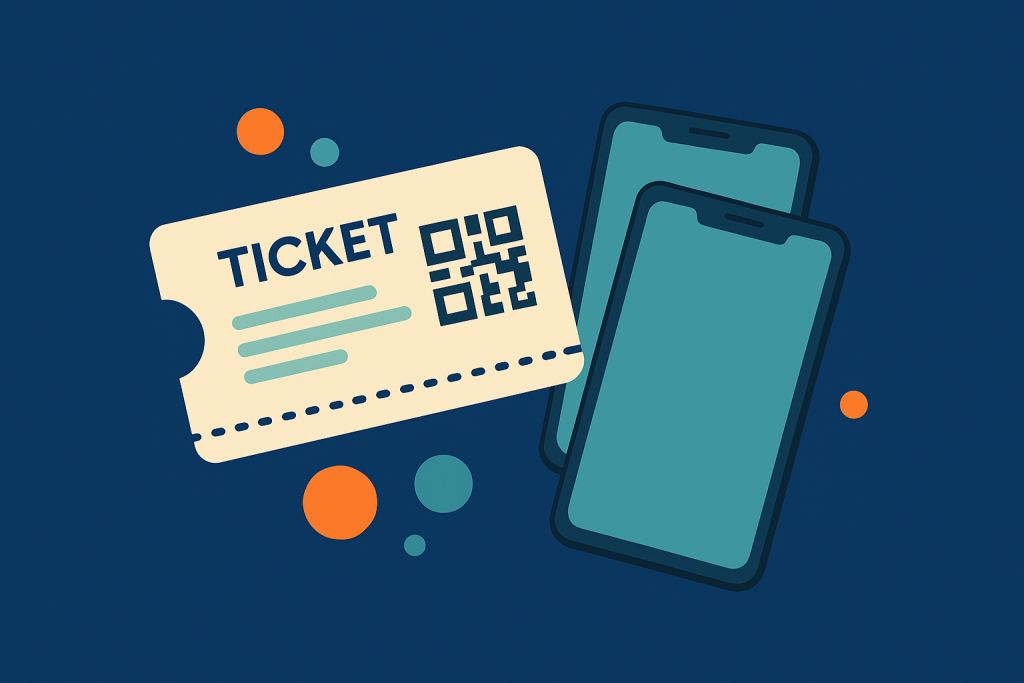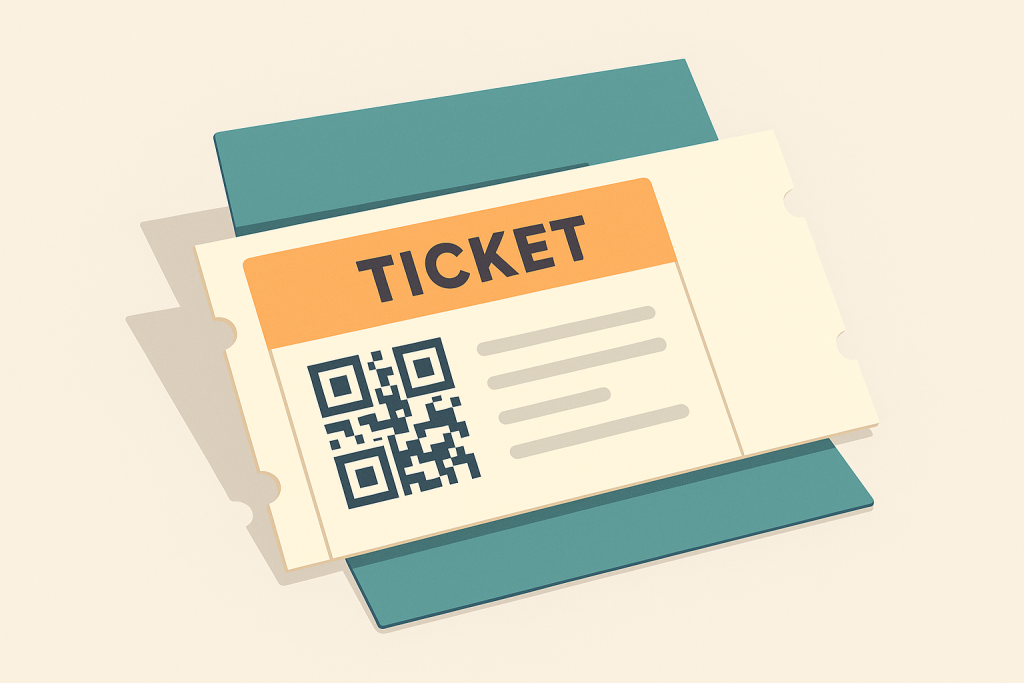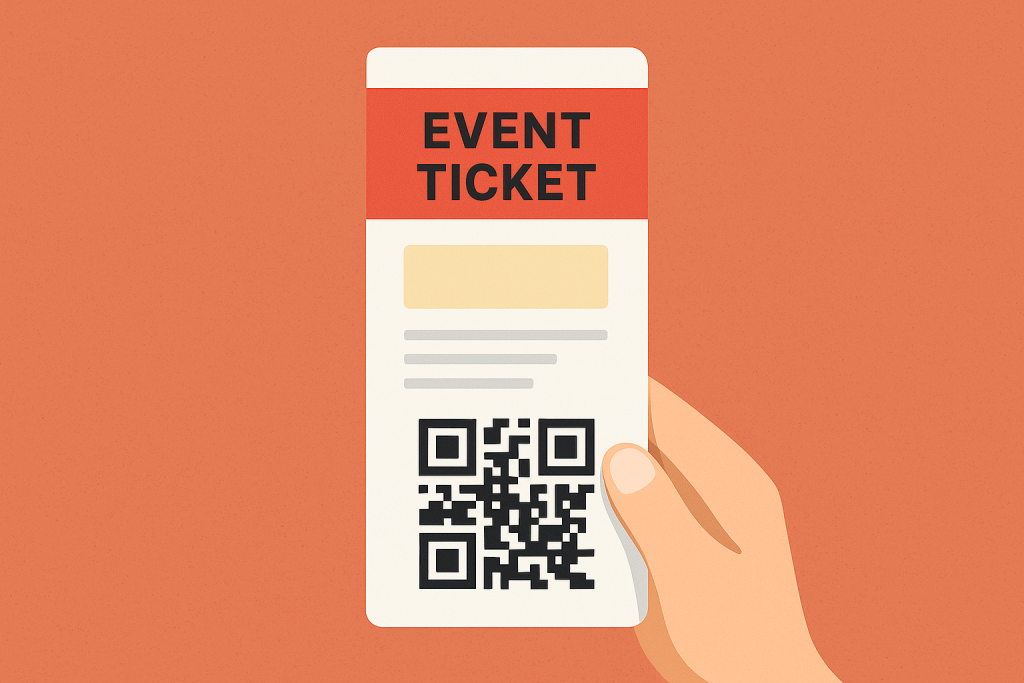The anatomy of a perfect ticket
Here’s the thing about tickets: most people treat them like utility bills. Necessary, but not exciting. Yet in Tickera, a ticket can be so much more than a rectangle with a QR code. Done right, it becomes part of the customer experience — and even part of your revenue strategy.
The first step, though, isn’t design. It’s asking a simple question: Do you expect your attendees to print their tickets or keep them digital?
Digital vs. printed
This decision is surprisingly important. The age group of your attendees and the type of event play a huge role here. A university crowd coming to a student festival? Expect them to whip out their phones. A charity gala with an older audience? Printing will be common. A family event with kids? You’ll probably see a mix of both.
If you’re leaning toward digital, you might not need a full-blown PDF template at all. Instead, you can use the solution that allows embedding QR codes right in the confirmation email. Attendees open the email on their phone, show the code at the door, and walk straight in. No attachments, no searching, no printing.
It’s clean, it’s convenient, and for some organizers it’s more than enough. You can still use the email body as sponsor space: a banner, a thank-you message, or a small ad that offsets your event costs. In that case, your ticket is the email itself.

But maybe you want a “real” ticket
Not every organizer wants to settle for a barebones QR code. Maybe you’re running a high-profile concert, or a brand-focused conference, or you simply like the idea of attendees receiving something polished and beautiful. That’s when you roll up your sleeves and dive into Tickera’s ticket template editor.
We’ve covered this before in detail in our post about creating beautiful ticket templates. It’s worth a read — but here are a few highlights you’ll thank yourself for later:
- Design with folding in mind: printed tickets will almost certainly get folded. Don’t put the QR code or barcode on the fold line. Your check-in staff will silently curse you if they have to smooth out paper just to scan a ticket.
- Brand it, don’t drown it: your logo, colors, and fonts are great, but keep them subtle enough that the QR code remains the star. Tickets should look like part of your event identity, not like a brochure.
- Consider sponsors: this is an often-overlooked goldmine. That blank space at the bottom or back of a ticket? Perfect real estate for sponsor logos, discount codes, or mini-ads. A ticket in someone’s pocket can also carry your sponsor’s message. That’s real value.
- Balance digital and print: your design should work both ways. A crisp PDF that looks sharp on a phone but also prints clearly on a budget home printer is the sweet spot. High contrast, clean layout, no fine details that get lost in grayscale.

Add useful extras (but don’t overstuff it)
Now that you have decided whether to go digital, printed or both, think about what would make life easier for both the attendees and people at the gate that will check these tickets in. A well-designed ticket can double as a mini information sheet.
Here are some extras worth considering:
- Custom fields collected during checkout — Did you ask for T-shirt size? Meal preference? Seat selection? This can all be printed right on the ticket.
- Special instructions — Parking tips, “Doors open 30 minutes before showtime,” or “Bring your ID for age-restricted entry.”
- Event branding — A logo, event colors, or a subtle background pattern go a long way toward making the ticket feel like part of the experience.
But here’s the key: don’t treat your ticket like a newsletter. Too much text clutters the layout and makes scanning harder for staff. Think of it as a helpful summary, not a novel.
When simple is enough… and when it isn’t
The beauty of Tickera is that you can decide what “perfect” means for your event. For some, the solution of embedding QR codes in emails covers all the bases. Attendees don’t print tickets, sponsors get visibility in the email, and everyone’s happy.
For others, tickets are part of the experience. They’re keepsakes, branded artifacts, even collectibles. In those cases, taking the time to build a thoughtful PDF ticket template is absolutely worth it. You can design something attendees are proud to receive — and that your sponsors will pay to appear on.
Neither option is “better” — it’s about what fits your event and your audience.

Wrapping it up
So, what’s the anatomy of a perfect ticket in Tickera? It depends on who’s holding it.
- If your crowd is digital-first, QR codes in emails are quick, effective, and sponsor-friendly.
- If you want a designed piece that reflects your brand and adds value, build a custom template and think like both a designer and a user: folding, scanning, branding, and sponsor placement all matter.
The point is, don’t treat tickets as an afterthought. They’re not just about getting people through the door. They’re part of your communication, your branding, and maybe even your revenue.
And when attendees pull out their ticket — digital or printed — it should make their life easier, your staff’s job smoother, and your event look more professional.